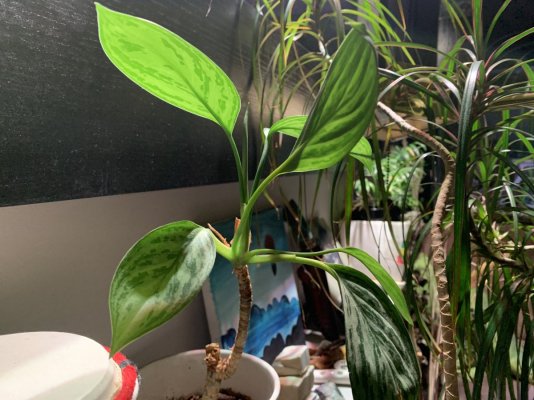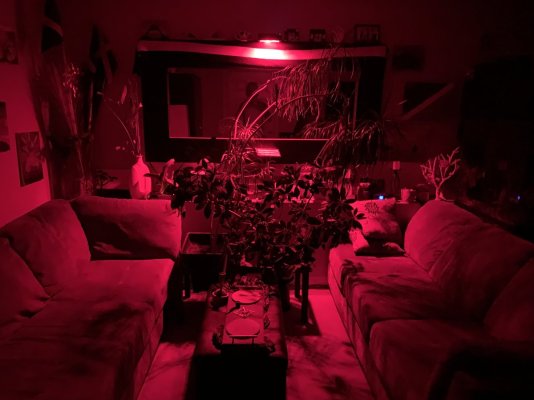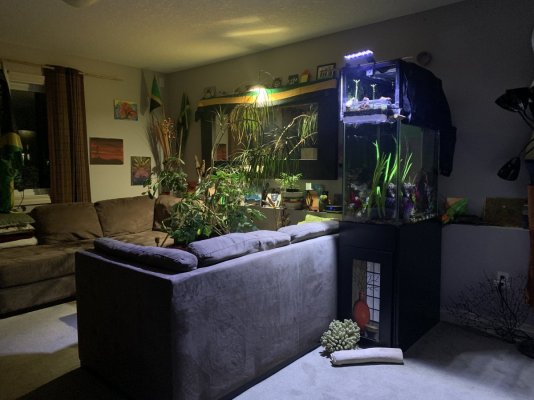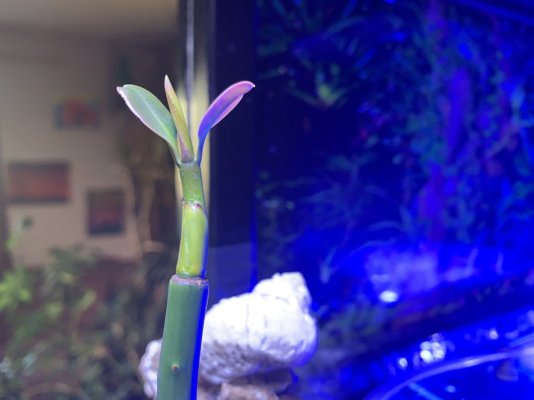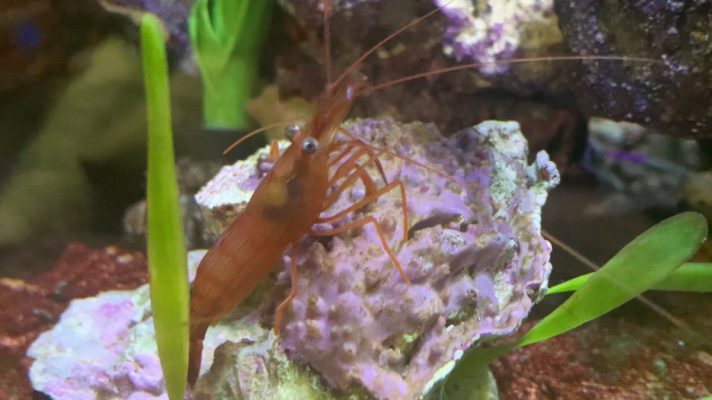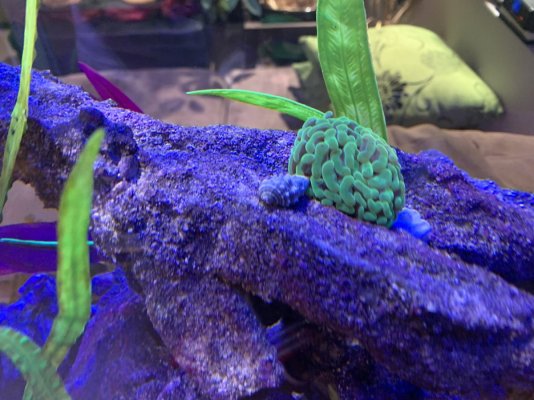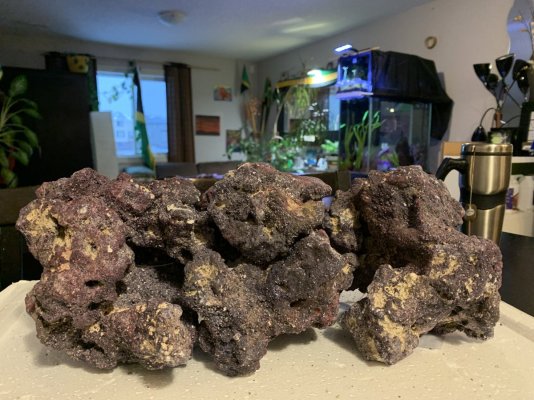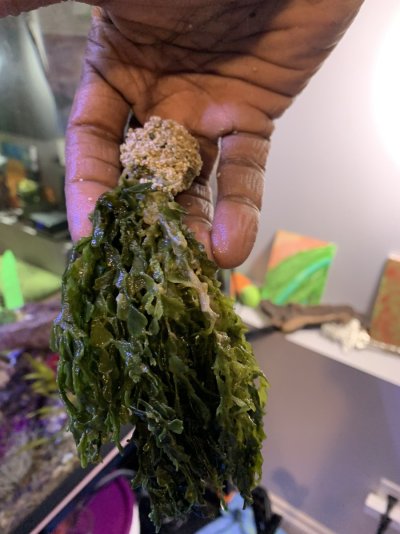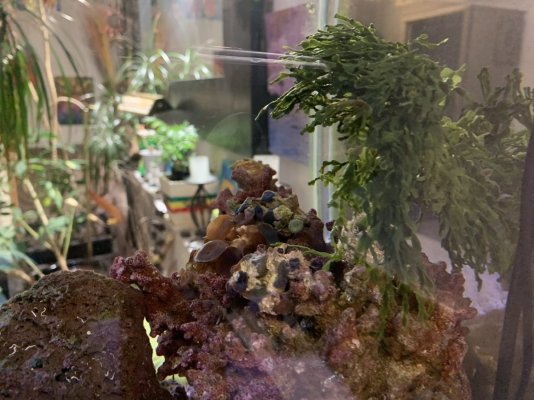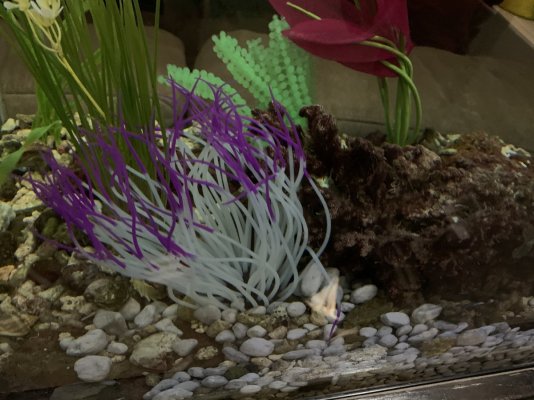It's the world's 1st lockdown and the second week of running our 50g marine tank without any filtration. This is what Blue Lagoon looked like, sitting at the centre of my winter condo in Calgary on April 19, 2020.

and here is the day's API chemistry:

All reefers will confront the fear of crashing their marine tankers on a coral reef at some point in this hobby, unfortunately, the majority that run aground into this fear and experience significant loss within the first year tend to abandon ship.
Defensive Reefing may just be the lighthouse which changes that.
When the world went into the 1st. lockdown in March 2020, many reefers panicked about running out of critical supplies like reef salt. Our response to this fear came the following month in April 2020 where we began to redesign and conduct performance tests on a deep 50 gallon saltwater aquarium affectionately called Blue Lagoon. Seated on a metal stand with no external or internal filtration chambers, Blue Lagoon was equipped with 9 months of supplies to conduct this tank build experiment which we now call Defensive Reefing.
While it’s good to make a redundancy plan for problems that could crash your reef tank, such as running dual return pumps in case one unexpectedly fails, Defensive Reefing builds critical crash scenarios into a tank design, so instead of running dual return pumps, we eliminated all plumbing thus no canisters, no sumps and no return pumps.
Powered Life Support System:

Closeup view from comfy red cushion on couch (April 19, 2020)
and here is the day's API chemistry:
All reefers will confront the fear of crashing their marine tankers on a coral reef at some point in this hobby, unfortunately, the majority that run aground into this fear and experience significant loss within the first year tend to abandon ship.
Defensive Reefing may just be the lighthouse which changes that.
When the world went into the 1st. lockdown in March 2020, many reefers panicked about running out of critical supplies like reef salt. Our response to this fear came the following month in April 2020 where we began to redesign and conduct performance tests on a deep 50 gallon saltwater aquarium affectionately called Blue Lagoon. Seated on a metal stand with no external or internal filtration chambers, Blue Lagoon was equipped with 9 months of supplies to conduct this tank build experiment which we now call Defensive Reefing.
While it’s good to make a redundancy plan for problems that could crash your reef tank, such as running dual return pumps in case one unexpectedly fails, Defensive Reefing builds critical crash scenarios into a tank design, so instead of running dual return pumps, we eliminated all plumbing thus no canisters, no sumps and no return pumps.
Powered Life Support System:
- One circulating powerhead (Neptune WAV ~ 4,000 gph)
- One Laguna air pump ~ 793 gph with two Coralife Limewood air stones
- One Eheim heater (150W)
- One LED light (Kessil A360X @ 90W)
- One tank controller (Neptune Apex)
- One heater controller (Exo Terra thermostat @ 600W)
- One Seneye Reef Monitor
- Refractometer
- API Saltwater Master Test Kit
- Floating thermometer
- Aquaforest Reef Salt mixed to a specific gravity of 1.025 using dechlorinated Calgary tap water which usually sits at a pH of 8.
- Water temperature at 78 degrees Fahrenheit +/- 1 degree.
- ~ Seventy percent of the aquarium’s surface is covered with a three part glass top and the magnetic wooden panel canopy, controls light dissipation and airflow above aquarium.
- Crushed coral mixed with pumice stone are the primary high flow substrates.
- Decorative aqua plants are included which also serve as visual flow indicators until more soft corals are added.
- Buried live rock allows for ~ eighty percent free swimming space.
- Random flow is generated at the base of the tank to create an Upflow surge across the micro-bubbling airstones at the surface.
- One Foxface Rabbitfish
- One Clown fish
- One Hermit crab
- One Asterina starfish
- One Mushroom coral
- ~ ten percent Live rock
- One bag of cultured ceramic biomedia
- Maintain low density fish and coral stock as per water quality parameters and ecosystem maturation.
- Minimize automation by manually dry feeding and toping up with fresh water to compensate for evaporation.
- Allow ambient and low LED/Lunar lights only to avoid pest and algae outbreak .
- Conduct small water changes 1% - 3% daily to keep nutrient loads in a safe range but plan for larger (30% - 50% max) if water quality suddenly deteriorates.
- Dose a mixed bacterial colony daily to minimize sludge and maintain water clarity using oxidation reduction potential (ORP) as a guide.
- Perform a short five minute daily tank side systems check/service.
- Keep daily tank records and log system changes.
- Thirty day ammonia spike expected and should normalize after new media colonized, but no changes expected in nitrite levels. Nitrates should fluctuate but not exceed 40 ppm.
- System should become stable within 90 days using a simplified marine husbandry plan thus be easily repeatable.
- After 9 months of testing, Defensive Reefing may prove to either become the most impractical or a very practical methodology for the new marine aquarist desiring to keep fish, invertebrates and coral with less catastrophic crash points.
Closeup view from comfy red cushion on couch (April 19, 2020)
Last edited:




